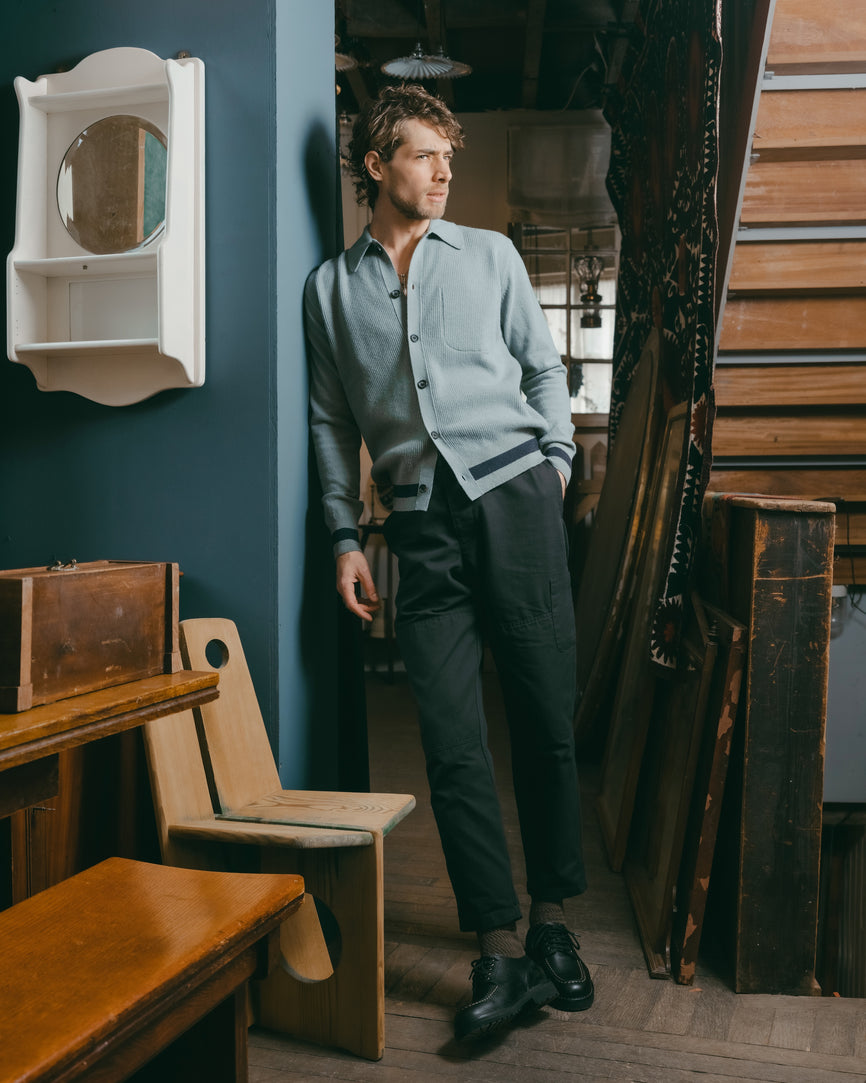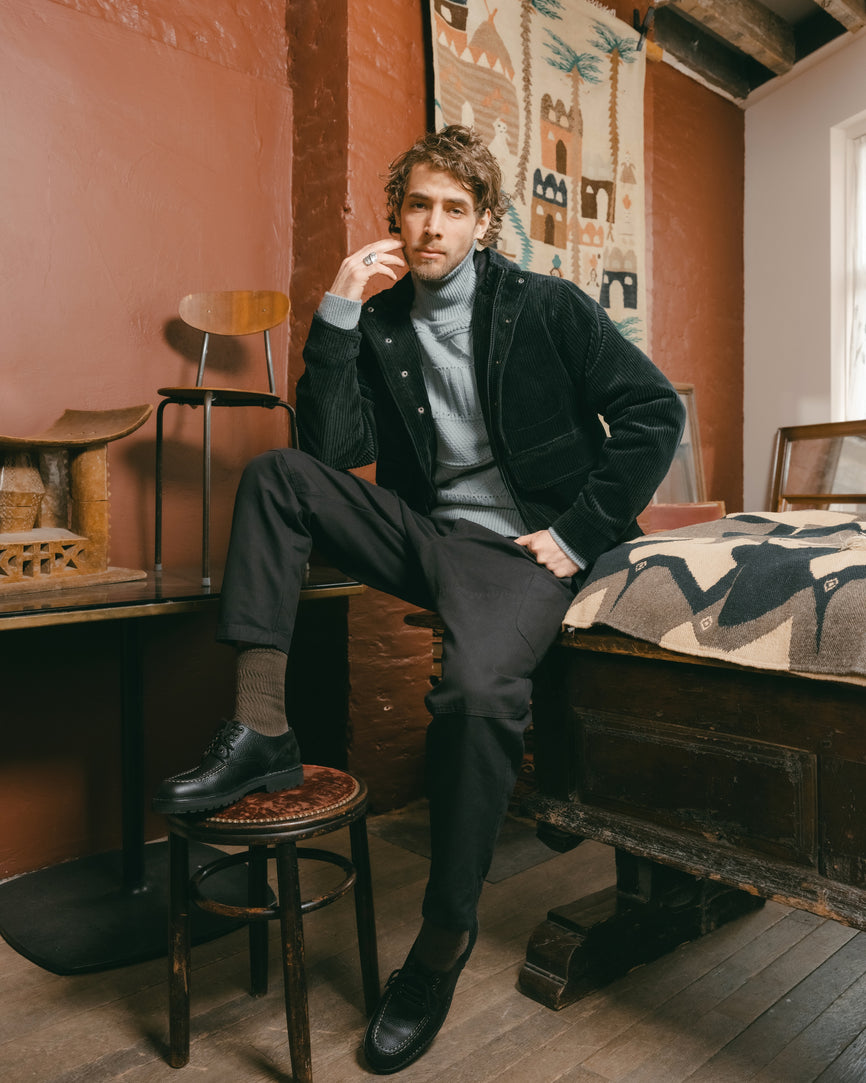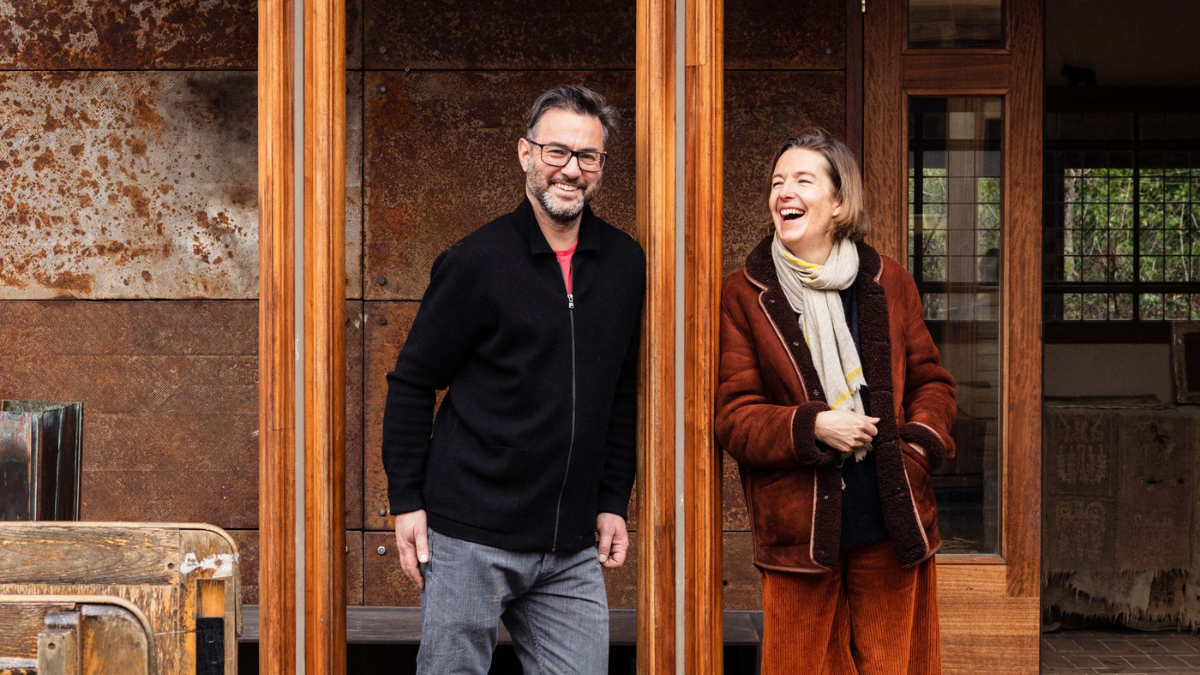Circularity is a word that has been at the forefront of our minds here at Oliver Spencer, having recently launched our Repurpose project that seeks to extend the life cycle of our clothing. The interior design industry is one of those that has always had longevity in mind, with furniture being passed through generations for centuries, but with the rise of cheap manufacturing technologies, much or the furniture produced today is not designed to last. One man seeking to change the way we think about the objects we embellish our homes with is Adam Hills, who together with his wife, interior designer Maria Speake, co-founded the cult salvage store Retrouvius in Kensal Green, London, over 20 years ago. We caught up with him recently to discuss his start in the salvage business and how his career has evolved over the years. Adam's a fascinating guy with an amazing eye for design details, and he was incredibly generous in letting us shoot our winter collection at the store on Harrow Road. If you're even the least bit interested in interior design, you'll love to hear what he has to say.
 |
 |
Hi Adam, so take us right back to the beginning and tell us how your salvage odyssey began...
Okay. Alright. So Maria and I met in Glasgow in '93, both studying architecture. Maria was a better designer than I am, and I realized quite quickly that I didn't actually want to be an architect, but I kind of enjoyed the subject. So I started exploring tangentially, getting involved in some very simple conservation/restoration work in the city, including our own place, and a number of other small projects. Then basically, to put it very simply, I started pulling things out of skips and decided it was quite fun! I took to going to markets, then going to demolition sites, thinking about the life cycle of buildings, about why they are demolished and how they're demolished. Building owners, when deciding to get rid of an asset, very often don't think about its constituent parts and their re-use potential. We realised there was a lot of value that was just being destroyed.
So the business can work in many different ways, but now, because we've been trading for 30 years, we obviously have earned a reputation, so things tend to come to us. In the olden days, it was just us sniffing out opportunities. I mean, when we first started it was obviously pre-email, pre-internet kind of days. So it was very much just driving around, looking at demolition sites and finding buildings that were looking sorry for themselves, then contacting the owners, that kind of thing. So it's not rocket science, but rather just using your eyes and learning about what things are made of. What's the difference between hardwoods and softwoods, or different types of marble and stone, and their different ages? What's Georgian and what's Victorian? All these factors all come into play when thinking about values and uses. Also in the 30 years that we've been trading, we've seen firsthand how fashions come and go, as well as the appreciation of different design genres and styles. Maybe there's an exhibition about Charles and Ray Eames, and then suddenly everyone wants Eames chairs. Not so long ago everyone wanted cast iron fireplaces and strip pine doors, and now you can't give them away.
 |
 |
 Mansfield Jacket Velvet Mole Grey Mansfield Jacket Velvet Mole Grey
|
 Treviscoe Shirt Adler Fawn Treviscoe Shirt Adler Fawn
|
 Dock Hat Rib Sea Green Dock Hat Rib Sea Green
|
How have you seen people's attitudes towards salvage change in those years?
At the beginning, people either didn't understand or certainly didn't appreciate what we were trying to do. They thought we were thieves or scrap people. The ecological awareness wasn't there. Within the architectural conservation world, which obviously is a fairly small pond, there was an appreciation of saving bits of buildings and reusing them. But in the wider world, the attitude was 'If you're building something new, why would you use something old? If you're building a new house, why would you possibly use a reclaimed floor?' Now, I think the ecological imperative has obviously risen hugely. And then, to put it really bluntly, there's this appreciation of resources, how value is perceived, and people understand a little bit more about provenance. Post Second World War, and the roll-out of globalised supply chains, there was suddenly stone coming from Turkey, and then there was stone coming from India, and then there was stone coming from China, and the man on the street would just pick one. Today, we're much more conscious of the provenance. More people are asking a few more questions about where things have come from.
 |
 |
Did Covid and lockdowns change the salvage landscape much?
It did it from our perspective. It allowed people to spend more time at home and a lot of people invested more in their environment, so we did well. Our turnover was almost identical to pre-Covid times, but our profit went up because we couldn't really spend that money because all the antiques fairs and auctions were closed. Although the construction industry broadly carried on, a lot of projects were obviously put on hold. Also, sites tightened up as to who was allowed to go on them. So the salvage opportunities massively declined, but it was a good moment for us because it gave us time to empty our warehouse.
Are there any particular items or salvage projects that you look back on really fondly and you think, oh my God, how on earth did we get our hands on that stuff?
Almost every day! Well, not quite, but I still get that that kind of feeling when discovering something. Sometimes it's massively valuable, but more often than now I just personally get a real kick out just going into cool buildings and finding amazing stuff. One favourite was the Shell Centre in Lambeth, right by the London Eye. A large section of it was demolished, but it was really cool to walk around that beforehand. It was just a really interesting bit of architecture. We didn't get as much as we wanted to, but still came away with a lot - lots of brass door handles. I'm sort of privileged in that I get to poke around old buildings.
 |
 |
 Britten Knitted Cardigan Greeves Sea Green Britten Knitted Cardigan Greeves Sea Green
|
 Salcombe Hooded Jacket Melrose Cord Green Salcombe Hooded Jacket Melrose Cord Green
|
 Talbot Roll Neck Jumper Bonham Sea Green Talbot Roll Neck Jumper Bonham Sea Green
|
How would you advise a sort of salvage newbie beyond how to incorporate repurposed things in their homes?
There are a lot of different parameters we'd have to know before we could really answer that question. But the bottom line is, I don't see much reason to buy anything new. I mean, apart from food and underpants, but things like cutlery, crockery, lighting, furniture, and all of these things are available from antiques fairs and charity shops and auctions and house clearance shops. It's not that I never buy anything new, but my first question is always 'can I re-use something?' Take the other day - I wanted some new pots and pans in my kitchen, but rather than going to John Lewis to buy new stuff, I bought some old La Creuset cast iron stuff that I found at a fair. There's a lot of in-built obsolescence with many products we buy these days and I can understand the economic reasons for that. But try to buy things that aren't going to fall apart after a week. It's the same with clothing. Try and buy things that last for more than one season.
 |
 |
When you're not working or when you're not poking around old buildings, what are your other passions?
I like riding motorbikes, but I don't make much separation between my personal life and my work life. So on my day off, I'll go to an antiques fair and on my working day I'll go to an antiques fair. I love hunting for things. I love going around historic buildings, whether it's a National Trust place or some cruddy demolition site. I like walking my dog in the countryside. Like a lot of Londoners, we bought a place in the countryside during lockdown. Rather than buying a nice cute cottage that was ready to move into, we bought a derelict six bedroom project near Stroud. We kicked the builders out just before Christmas. It's not quite finished, but we're nearly there. My wife Maria is the interiors genius. She heads up our design studio. She's very very good. She does a lot of high end residential, and her USP is obviously using salvage, some of which comes from me, but not all of it. She does a lot of different architectural styles, but what they tend to share is a tactility and visual interest ,and some sense of permanence that solid salvage materials tend to bring. They come with pattern and texture, and an overt history. I would implore anyone redesigning a home to think about incorporating salvage into their ideas.
Discover everything Retrouvius has to offer at www.retrouvius.com.
Shop the Winter 23 Collection